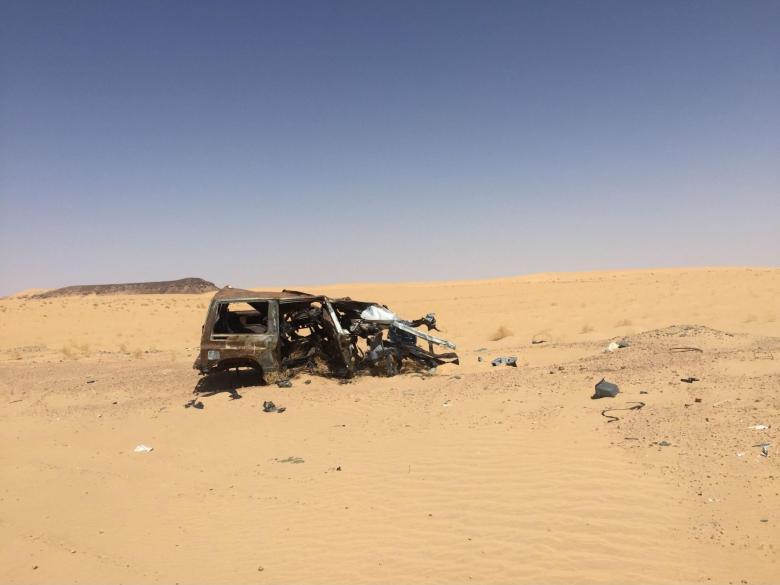
By Safa Al Ahmad
On Sept. 11, 2001, I was between jobs and living in Washington, D.C. I woke up a few minutes before 9 a.m. and, as I always did, I turned on the television to watch the news. Still drowsy, I stared at the looping videos from New York on my screen, trying to make sense of what I was looking at. When the third plane struck the Pentagon half an hour later, I was jolted out of my state of shock and frantically tried to call my brother, who worked at a bank inside the Pentagon complex. He’d left his cellphone at home that day, which, of course, added to the general sense of panic I was feeling until I spoke to him that evening. And slowly, we digested the news that 15 of the 19 hijackers were from our home country, Saudi Arabia.
In the hours after the attacks, it was apparent that war was coming, but who would be the target? President George W. Bush made it clear to leaders across the world: Either you were with the United States or with the terrorists. And with that, governments in the Middle East and North Africa saw the opportunity for billions of dollars to fund counterterrorism operations. I didn’t know it then, but I would end up spending much of the next two decades reporting on how many of them would expand and adapt the framing of the so-called “war on terror” to suit their own needs.
Nowhere was this more obvious and devastating to me than in Yemen, a country I fell in love with on my first visit in the late 2000s. Sanaa, the capital city, was everything I had wished Riyadh, the Saudi Arabian capital, could be. Women in Sanaa were an integrated part of society, visible, active and vocal. While women in Saudi Arabia were still banned from driving, here, women drove everywhere. I found the vibrant journalism and media scene exhilarating and was inspired by how well it represented the full spectrum of political parties and opinions in the country. Most of all, I loved the ease with which I could wander the streets of old Sanaa, buying books from Hadda Street and drinking Adeni tea while talking openly with friends about politics, religion and history.
Of course, Yemen was no paradise. Yemenis had endured political repression, corruption and the legendary kleptocracy of President Ali Abdullah Saleh since 1990. But the more time I spent in Yemen, the more stories I heard about how much worse the repression had gotten after 9/11, after Saleh became an important ally in America’s war on terror.
But Yemen had been caught up in American counterterrorism priorities even before that. Almost a full year before the 9/11 attacks, two al-Qaida members on a dingy loaded with explosives carried out a suicide bombing attack on the USS Cole, an American warship docked in Aden, in southern Yemen. They killed 17 U.S. sailors, making it unavoidable in some ways that Yemen would have to align with the United States.
Saleh visited the White House in November 2001 and in exchange for millions of dollars, he promised to crack down on suspected terrorists and al-Qaida activity. But over the next several years, Saleh would use the war on terror to fight his own battles, regardless of whether they had any connection to al-Qaida. This included waging six brutal wars against an insurgency by the Houthis, a militia in northern Yemen, as well as repressing al-Hirak al-Janoubi, a nonviolent movement calling for southern independence.
Since at least late 2009, Washington was aware of how Saleh was using American weapons and U.S.-trained counterterrorism units to fight the Houthis, according to leaked diplomatic cables. A Senate Foreign Relations Committee report in early 2010 expressed “serious concerns” that Saleh had “diverted” American counterterrorism assistance to fight the Houthis rather than al-Qaida. Indeed, while Yemen’s security forces were focused on defeating the Houthis and shutting down protests in the big cities, al-Qaida expanded its presence in more isolated parts of the country. This Yemeni offshoot came to be known as al-Qaida in the Arabian Peninsula, or AQAP.
And yet, throughout this period, U.S. support for Saleh never waned.
In 2011, a massive popular uprising sprang up against Saleh, part of the so-called Arab Spring protests. After 33 years in power, he was ousted in 2012. In the chaos that followed, the country was fractured between multiple warring factions, and AQAP seized large parts of the south.
That’s when I went to southern Yemen to film a FRONTLINE documentary about the AQAP takeover. At one of the AQAP checkpoints, I met a young man whose life choices I still think about today. He used to be an activist with al-Hirak but told me the repression he witnessed left him completely disillusioned with nonviolence as a political strategy. He said he was tired of every protest march ending in a funeral.
I immediately thought of the icon of the al-Hirak movement, a 25-year-old activist named Ahmed Darwish, who had been tortured to death by Yemeni security forces in 2010. His family refused to bury him until there was an impartial investigation into his death, and when thousands of people gathered for his funeral a year later, security forces opened fire on them.
The young man who had joined AQAP told me he didn’t agree with al-Qaida’s ideology, nor did he hate the Americans. He said he joined al-Qaida only because they seemed better equipped to fight their common adversary, the Yemeni government.
This was the landscape in which President Barack Obama increased military aid to Yemen and escalated drone strikes against alleged al-Qaida targets. Some of these were strikes against known AQAP leaders like the American cleric Anwar al-Awlaki, who was killed in a drone strike in 2011. But some others targeted unidentified groups of men and boys over 16 simply because their behavior bore the “signature” of military activity. Nearly 1,800 Yemenis are estimated to have died from U.S. drone strikes and other counterterrorism operations in Yemen. Yet there’s no accounting for how many of them might be civilians. That’s because of the persistent lack of transparency around drone strikes, as well as a controversial method of counting “military-age males” as combatants.
In a country torn apart by multiple warring factions and where allegiances have been shifting at a dizzying pace, it’s extremely difficult to pinpoint who exactly is AQAP or the Islamic State group. By 2014, the Houthis had taken over Yemen’s capital, Sanaa, and al-Hirak had turned into a fully armed movement fighting the Houthis. Saudi Arabia and the United Arab Emirates labeled the Houthis a terrorist group backed by Iran, but the Houthis are also sworn enemies of al-Qaida and the Islamic State group. And since the Obama administration started backing a Saudi-led coalition in its war against the Houthis in 2015 – a war that has turned Yemen into the world’s worst humanitarian crisis – the battle lines have gotten even more blurred.
To get a sense of how this all played out on the ground, I visited parts of southern Yemen that had been pounded by drone attacks in 2017 and 2018, when President Donald Trump further expanded the war on terror in Yemen. The highways were littered with the remnants of cars that had been struck by drones. But it wasn’t just the drone attacks that left people traumatized.
In a small village called Adhlan in Marib province, 50 Navy SEALs had landed on the hilltops around the village in May 2017. It was the largest known ground raid on Yemen. The goal was to capture al-Qaida leaders. Ultimately, the Pentagon said seven militants had been killed. But there were also five civilian casualties, among them a 15-year-old boy and a man in his 70s. When I got there in early 2018 to interview villagers for another FRONTLINE documentary, it was several months after the raid, but the families were still traumatized, struggling to understand what had happened to them.
Mujahid, a boy of 7 at the time, was clearly affected by the raid. He had lost his brother and his uncle, as well as his hearing in one ear. I was filming on the hilltop where the Navy SEALs had landed, and Mujahid’s father was gently teasing his son, “Look, it’s an American!” The boy looked panic-stricken, his eyes darting across the landscape, searching for the American. When his father pointed at me, Mujahid grabbed the closest stone to throw at me. His father stopped him just in time, telling him there was nothing to fear.
Twenty years, $850 million in military aid and nearly 400 drone strikes later, when I think of the legacy of the war on terror in Yemen, I am still haunted by the look of terror that swept across Mujahid’s face.
-Reveal
 رئيس اللجنة التحضيرية للحركة السياسية لشعب الجنوب يهنئ بن شاجع بشهر رمضان
رئيس اللجنة التحضيرية للحركة السياسية لشعب الجنوب يهنئ بن شاجع بشهر رمضان
 أمين عام حزب العدالة والحرية يهنئ بن شاجع بحلول شهر رمضان
أمين عام حزب العدالة والحرية يهنئ بن شاجع بحلول شهر رمضان
 اليمن: شخصيات اجتماعية وسياسية تهنئ الشيخ بن شاجع بحلول شهر رمضان
اليمن: شخصيات اجتماعية وسياسية تهنئ الشيخ بن شاجع بحلول شهر رمضان
 تكتل قبائل بكيل يهنئ أبناء اليمن بحلول شهر رمضان ويدعو الجميع الاصطفاف لمواجهة التحديات
تكتل قبائل بكيل يهنئ أبناء اليمن بحلول شهر رمضان ويدعو الجميع الاصطفاف لمواجهة التحديات
 بن شاجع يدعو لمراجعة المواقف والتوحد أمام التحديات الكبيرة التي يواجهها اليمن
بن شاجع يدعو لمراجعة المواقف والتوحد أمام التحديات الكبيرة التي يواجهها اليمن
 محكمة سعودية تبرئ مستثمرًا يمنيًا قُتل تحت التعذيب بتهمة كيدية
محكمة سعودية تبرئ مستثمرًا يمنيًا قُتل تحت التعذيب بتهمة كيدية
 الأمم المتحدة: نقص المساعدات فاقم الوضع الإنساني المتردي في اليمن
الأمم المتحدة: نقص المساعدات فاقم الوضع الإنساني المتردي في اليمن
 مسلحون قبليون يفجرون خطاً لأنابيب النفط في مأرب احتجاجا على رفع أسعار الوقود بالمحافظة
مسلحون قبليون يفجرون خطاً لأنابيب النفط في مأرب احتجاجا على رفع أسعار الوقود بالمحافظة
 المبعوث الاممي يعلن موافقة الأطراف اليمنية على بنود خطة سلام دائم
المبعوث الاممي يعلن موافقة الأطراف اليمنية على بنود خطة سلام دائم
 مأرب: قتلى وجرحى بسبب رفع أسعار الوقود والقطاع القبلي مستمر
مأرب: قتلى وجرحى بسبب رفع أسعار الوقود والقطاع القبلي مستمر







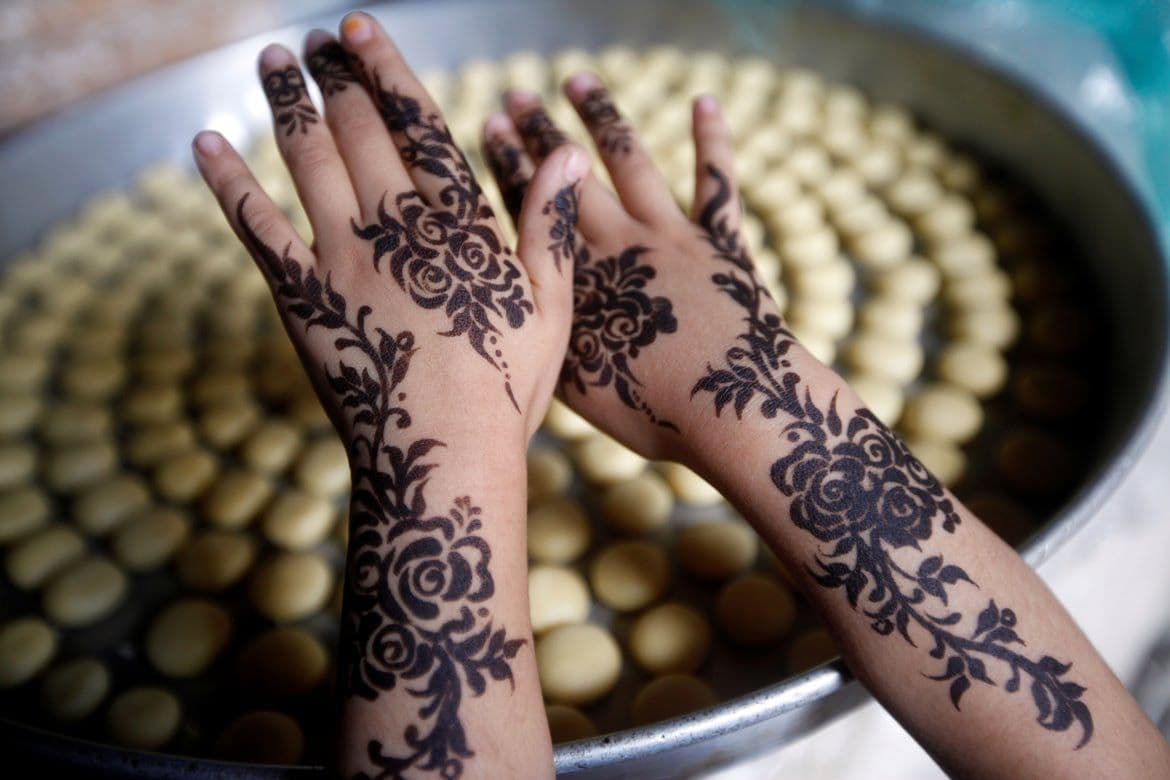
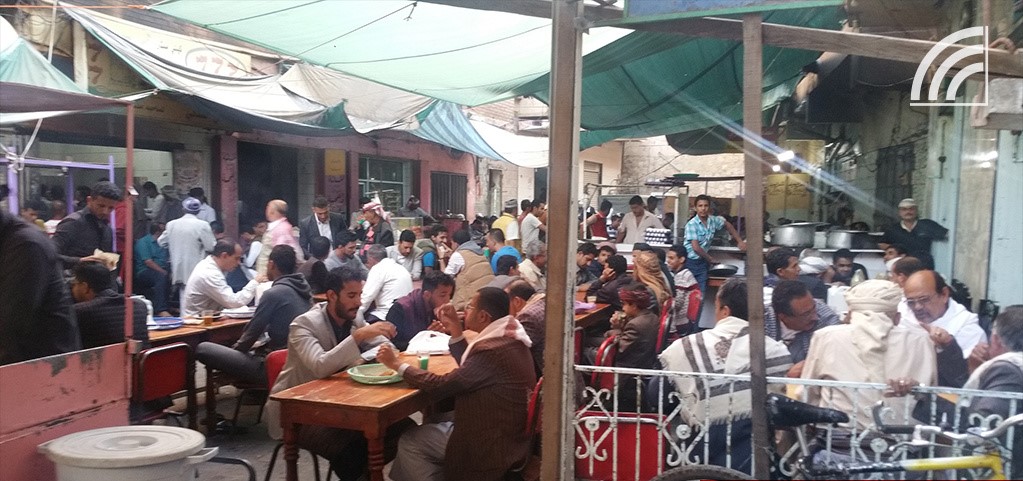
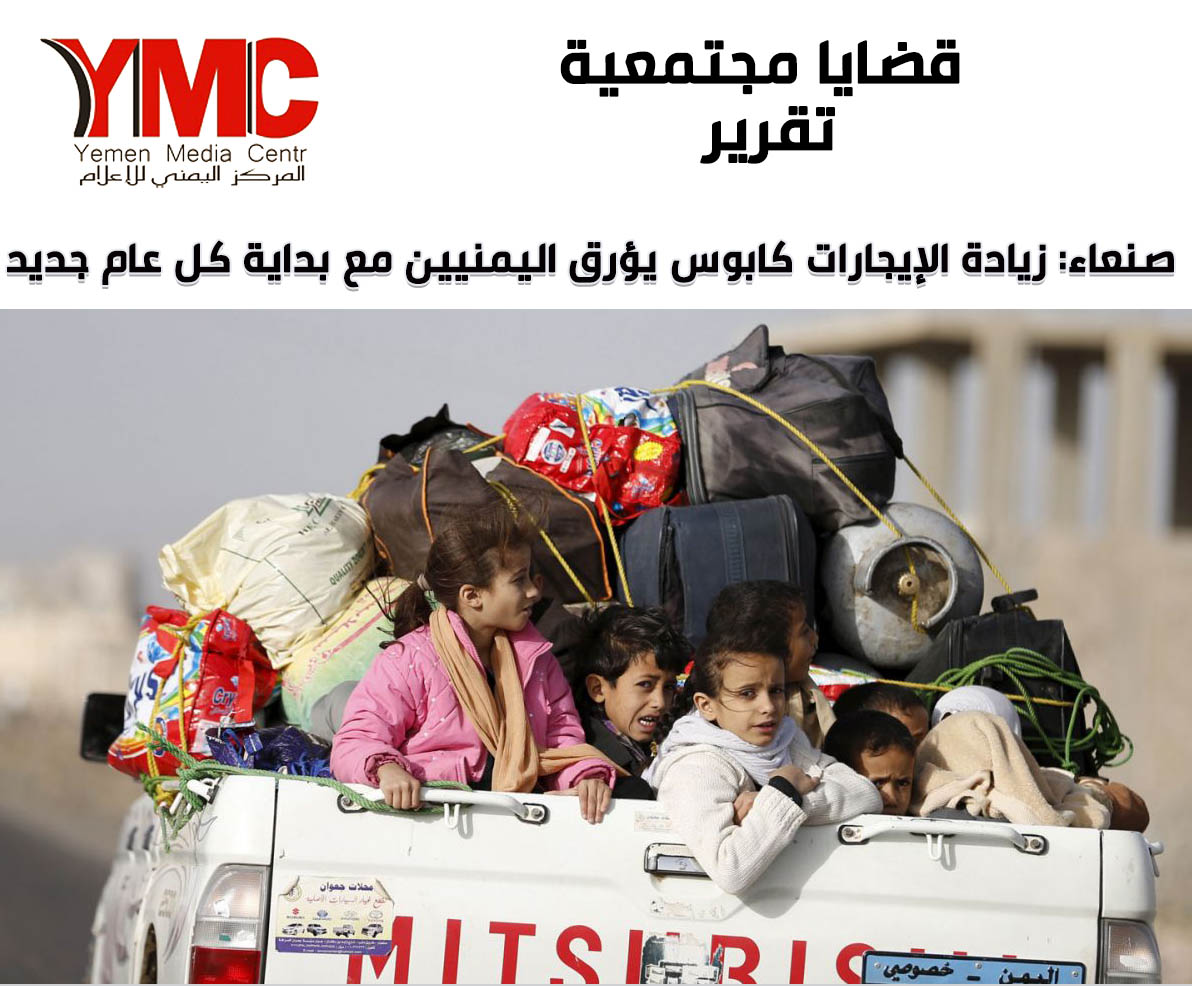
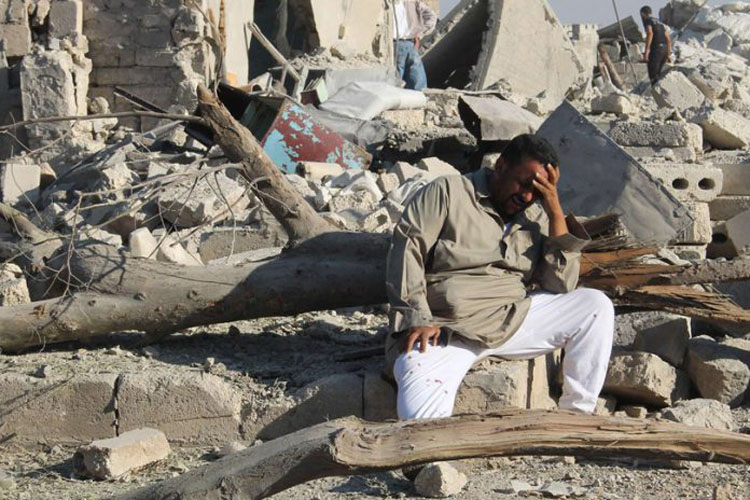
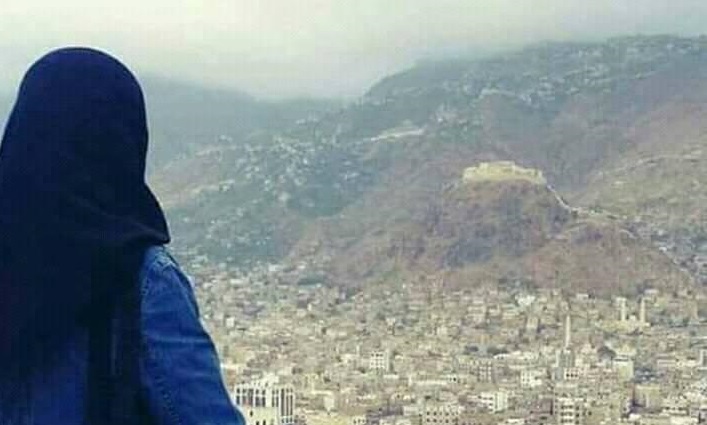
 فيسبوك
فيسبوك  تويتر
تويتر  يوتيوب
يوتيوب 
قيامك بالتسجيل وحجز اسم مستعار لك سيمكنكم من التالي:- الاحتفاظ بشخصيتكم الاعتبارية أو الحقيقية.
- منع الآخرين من انتحال شخصيتك في داخل الموقع
- إمكانية إضافة تعليقات طويلة تصل إلى 1,600 حرف
- إضافة صورتك الشخصية أو التعبيرية
- إضافة توقيعك الخاص على جميع مشاركاتك
- العديد من الخصائص والتفضيلات
إضغط هنا
إضغط هنا